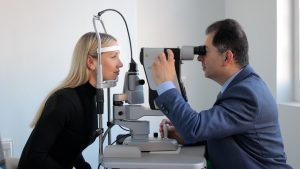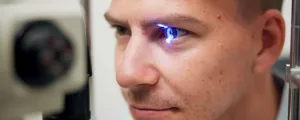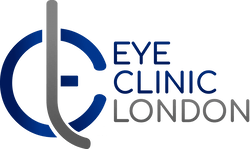How Long Does It Take to Recover from LASEK Eye Surgery?

If you’re thinking about getting LASEK surgery, you’ve probably heard that the recovery is slightly longer than LASIK. While that’s true, it’s also important to know that LASEK offers equally clear results just on a slightly slower timeline.
Recovery isn’t just about waiting for your vision to improve; it’s about giving your eyes time to heal properly. Understanding what happens during each stage of recovery helps you manage your expectations, care for your eyes correctly, and enjoy the best possible results.
In this article, I’ll walk you through what to expect day by day, when your vision will stabilise, and how to take care of your eyes after Lasek surgery in London for a smooth and successful recovery.
What Makes LASEK Recovery Different from LASIK?
The difference in recovery mainly comes down to how each procedure affects the corneal surface.
LASIK creates a thin flap in the cornea before reshaping the tissue beneath with a laser.
LASEK, on the other hand, doesn’t create a flap. Instead, the top layer of the cornea (the epithelium) is gently loosened and lifted aside before laser correction and then replaced afterward.
Because those surface cells need time to regenerate and reattach, LASEK recovery involves a few extra days of healing and protection.
The trade-off? LASEK avoids flap-related complications and is ideal for people with thin corneas, dry eyes, or active lifestyles.
Immediate Recovery: The First 24–48 Hours

Right after your procedure, your surgeon will place a protective contact lens, known as a bandage lens, over each treated eye. This little shield helps your cornea heal and reduces friction when you blink, making your recovery more comfortable.
Here’s what you can expect during the first day or two:
- Minimal discomfort during surgery: Thanks to the numbing drops, you won’t feel pain while the procedure is happening. You might notice some pressure or a strange sensation, but it shouldn’t hurt.
- Mild discomfort afterward: Once the anaesthetic wears off, your eyes may feel scratchy, watery, or extra sensitive to light. This is completely normal and usually temporary.
- Blurred vision: Your eyesight may be hazy or slightly foggy at this stage. Don’t worry—this is part of your eye adjusting to the treatment.
- Sensitivity to light and touch: You may prefer to rest in a dimly lit room and avoid rubbing your eyes. Even gentle activities like reading or screen time might feel a bit uncomfortable.
- Irritation rather than pain: Most people describe this stage as feeling like they have an eyelash stuck in their eye. It’s annoying but usually manageable with your prescribed drops.
- Emotional adjustment: It’s normal to feel a little anxious about your vision during these first hours. Remind yourself that your eyes are beginning their healing process, and the discomfort is temporary.
During this period, it’s important to take it easy, follow your surgeon’s instructions, and avoid rubbing or straining your eyes. You’ll be amazed at how quickly your eyes start to feel better once you give them the right care.
Days 2–4: The Healing Phase
During the first few days after your procedure, your eyes are working hard to regenerate the epithelial layer, which is the surface of your cornea. This is a crucial part of your recovery, and you may notice a few temporary changes.
Here’s what you might experience:
- Increased tearing or light sensitivity: Your eyes may feel watery, and bright light could be uncomfortable. Sunglasses indoors or outdoors can help.
- Gritty or burning sensation: It might feel like there’s something in your eye, or like your eyes are slightly irritated.
- Mild swelling around the eyelids: Your eyelids might look a little puffy, which is normal as your eyes heal.
- Slight fluctuations in vision: You may notice your vision becoming clearer one moment and slightly blurry the next—this is completely expected at this stage.
To support your recovery, your doctor may prescribe:
- Antibiotic drops to prevent infection
- Anti-inflammatory drops to reduce irritation
- Lubricating artificial tears to soothe dryness and keep your eyes comfortable
During this phase, it’s important to avoid touching or rubbing your eyes, as this can interfere with healing. Many people find it helpful to take 2–3 days off work to rest their eyes, minimise strain, and let the healing process progress smoothly.
Remember, this phase is temporary. With the right care, your eyes are steadily getting stronger, and each day brings you closer to clearer, more comfortable vision.
Days 4–7: Vision Gradually Improves

By the end of your first week, most of the initial discomfort should have eased. During your follow-up appointment, your surgeon may remove the bandage lenses, depending on how quickly your eyes are healing.
Once the protective lenses are out, here’s what you can expect:
- Clearer, more stable vision: You’ll likely notice your sight becoming sharper and more reliable.
- Reduced dryness and light sensitivity: Your eyes will feel more comfortable in normal lighting conditions.
- Minor fluctuations in clarity: It’s normal for your vision to change slightly, especially when reading or spending long periods in front of screens.
- Tired or watery eyes: After extended visual focus, your eyes may feel fatigued or produce more tears than usual.
Helpful tips for this stage:
- Blink often when using digital devices to prevent dryness.
- Use artificial tears regularly to keep your eyes hydrated and comfortable.
- Take short breaks from screens or close work to give your eyes a rest.
At this point, your eyes are settling into the healing process, and you’ll probably notice daily improvements. With consistent care, you’re on your way to clearer, more comfortable vision.
Weeks 2–4: Returning to Normal Activities
By the second week, you’ll likely start feeling more like yourself again. Many people can gradually resume:
- Office work, depending on comfort and your surgeon’s advice
- Driving, once your vision feels safe and meets legal standards, as confirmed by your surgeon
- Gentle exercise, such as walking or yoga, when comfortable and cleared by your surgeon
However, there are still a few things to avoid during this period:
- Swimming or using hot tubs until your surgeon confirms it’s safe
- Heavy workouts or contact sports for a few weeks, or until advised otherwise
- Eye makeup
- Dusty or smoky environments
Your corneal surface continues to stabilise during this time, so gentle care and following your surgeon’s instructions remain essential.
1–3 Months: Vision Sharpens and Stabilises
Most patients achieve noticeable visual clarity within the first 2 weeks, but it can take up to three months for your vision to reach its full potential.
You might experience temporary fluctuations, such as:
- Minor blurring in the mornings
- Dryness in air-conditioned spaces
- Occasional glare or halos at night
These are all normal as your eyes adjust. Regular follow-up visits allow your surgeon to monitor healing and adjust your eye drop routine if needed.
What Affects Your Recovery Time?
While most people follow a similar healing pattern, your recovery speed can vary depending on a few important factors. Understanding these can help you set realistic expectations and take steps to support your eyes.
- Age
Younger patients often heal faster because their cells regenerate more quickly. If you’re on the older side, don’t worry—your eyes will still recover, but it may take a little longer for vision to stabilise. - Prescription Strength
If you have a stronger prescription, your surgeon may need to reshape more of your cornea. This can extend your healing time slightly, so you might notice vision fluctuations for a few extra days. - General Health
Your overall health plays a big role in recovery. Conditions like diabetes, autoimmune disorders, or chronic inflammation can slow the healing process. Maintaining a healthy diet, staying hydrated, and managing existing health issues can help your eyes recover more efficiently. - Post-Operative Care
How closely you follow your aftercare instructions makes a huge difference. Using your prescribed drops on schedule, avoiding rubbing your eyes, and taking breaks from screens when needed can significantly speed up healing and reduce discomfort. - Lifestyle and Environment
Smoking, exposure to dust or smoke, and excessive screen time can all slow down recovery. Taking steps to minimise these factors—like wearing sunglasses outdoors and using humidifiers indoors—can help your eyes feel better faster. - Consistency in Follow-Up Care
Attending all your scheduled check-ups allows your surgeon to monitor your healing and catch any minor issues early. This ensures you’re on track for a smooth, timely recovery.
By being aware of these factors and actively supporting your eyes, you can help make your recovery as smooth and comfortable as possible.
How to Care for Your Eyes After LASEK
Good aftercare is essential for a smooth recovery and to help your eyes heal as quickly and comfortably as possible. Here’s what you should do:
Use Your Prescribed Eye Drops
Stick to your drop schedule exactly as your surgeon advises. Skipping doses can slow your healing and increase your risk of infection. Think of your drops as your eyes’ main support system during recovery.
Protect Your Eyes
Always wear sunglasses when you’re outdoors. They shield your eyes from UV rays, wind, and dust, all of which can irritate healing tissue. Even on cloudy days, UV protection is important.
Avoid Makeup and Eye Creams
Cosmetics can introduce bacteria or small particles that may irritate your eyes. Hold off on eye makeup, creams, or lotions around your eyes until your surgeon gives the all-clear.
Don’t Rub or Touch Your Eyes
Even if your eyes feel itchy or dry, avoid rubbing. Rubbing can disrupt healing and increase the risk of complications. Instead, use lubricating drops whenever your eyes feel uncomfortable.
Get Plenty of Rest
Your body heals fastest when you’re resting. Try to limit screen time during the first few days and take short naps if your eyes feel tired. This rest helps your corneas regenerate more efficiently.
Follow Up Regularly
Attend all scheduled check-ups. Your surgeon will monitor your healing and address any concerns early, helping ensure your vision recovers safely and fully.
Create a Comfortable Environment
Dim lighting, clean bedding, and minimal dust can make your recovery more comfortable. Small changes like these reduce irritation and support faster healing.
By following these steps carefully, you’ll give your eyes the best chance to heal smoothly, reducing discomfort and helping your vision stabilise more quickly.
Returning to Work and Daily Life
Most people can resume normal work after about 5–7 days, though this depends on your occupation.
If your job involves prolonged screen use, consider starting part-time for the first few days.
Driving:
- Avoid driving until your vision meets safety standards, confirmed by your surgeon.
Exercise:
- Gentle walking or yoga is fine after one week.
- Avoid high-impact or contact sports for at least 3–4 weeks.
Swimming:
- Swimming should generally be avoided for a few weeks, or until your surgeon confirms it’s safe.
Vision Milestones: What to Expect
First couple of days: Your vision may be blurry, and mild discomfort is common. Light sensitivity and tearing can occur, so resting in a dimly lit room can help your eyes feel more comfortable.
A few days afterward: You may notice gradual improvement in your vision. Discomfort usually begins to ease, and your surgeon may remove the bandage lenses once your eyes are healing well.
First one to two weeks: Your eyesight will likely feel clearer, and any irritation or dryness may be minimal. Many people start returning to their usual routines, including work and daily activities, depending on comfort and their surgeon’s advice.
Around the first month: Vision often becomes more stable, allowing you to gradually resume gentle exercise, wearing makeup, or other activities you had paused, as guided by your surgeon.
Over the following months: Your vision continues to settle, and most patients notice long-term improvements in both clarity and comfort. Full stabilisation may take some time, so follow-up visits are important to ensure your eyes are healing well.
Common Side Effects and How to Manage Them
- Dry Eyes
Very common after LASEK. Use lubricating drops several times daily to ease dryness.
- Light Sensitivity
Wear sunglasses outdoors and avoid harsh indoor lighting until it improves.
- Glare or Halos
Temporary visual effects that fade as the cornea heals.
- Mild Discomfort
Over-the-counter pain relief can help if needed, but most patients find it tolerable.
If you ever experience severe pain, discharge, or sudden vision loss, contact your surgeon immediately.
Tips to Speed Up Healing
- Stay hydrated your eyes heal better when your body is well hydrated.
- Avoid alcohol and smoking both slow down healing.
- Get enough sleep aim for 7–8 hours nightly.
- Use artificial tears keep the eyes moist and comfortable.
- Eat antioxidant-rich foods such as leafy greens, nuts, and fish to support tissue repair.
Long-Term Results
By the three-month mark, most people enjoy 20/20 vision or better with clear, stable results.
The outcomes from LASEK are just as sharp and permanent as LASIK only the timeline differs slightly.
Long-term benefits include:
- No dependence on glasses or contact lenses
- Safer for people in physical professions
- Stronger corneal structure for future eye health
With consistent aftercare and regular check-ups, your vision results can last many years or even a lifetime.
FAQs About LASEK Recovery:
- How long does it take for my vision to become clear after LASEK?
Your vision starts improving almost immediately, but clarity can take time. In the first couple of days, your sight will likely be blurry and sensitive to light. Most people notice gradual improvement within the first few days, and vision continues to stabilise over several weeks. Around one month, vision may feel steadier, but it can take up to three months to reach full clarity, depending on your eyes and healing. - Will I feel pain after LASEK surgery?
You shouldn’t experience severe pain, but mild discomfort is common. Many patients describe it as a scratchy or gritty sensation, similar to having an eyelash in your eye. This usually improves within the first few days as the corneal surface heals. Using prescribed eye drops and resting your eyes can make this stage much more comfortable. - Can I drive immediately after LASEK?
No, you should avoid driving until your vision meets legal safety standards, which your surgeon will confirm during follow-up visits. Even if you feel confident, early post-operative vision can fluctuate, so it’s safer to wait until your eyes have stabilised. Patients are usually cleared to drive once their vision feels safe and their surgeon confirms it. - When can I return to work and normal activities?
You can often return to office work after about a week, depending on comfort and your surgeon’s advice. If your job requires intense visual focus, consider starting with part-time hours to give your eyes a gradual adjustment period. Gentle exercise like walking or yoga can usually resume when comfortable and with your surgeon’s approval. - How should I care for my eyes at home after surgery?
Aftercare is essential for a smooth recovery. You need to use your prescribed eye drops on schedule, protect your eyes from sunlight and wind, avoid rubbing or touching them, and get plenty of rest. Limiting screen time and maintaining a clean, comfortable environment also helps your eyes heal faster. - What side effects are normal during recovery?
Temporary side effects like dry eyes, light sensitivity, minor glare, or halos around lights are common. Your cornea is regenerating, so some fluctuation in vision or discomfort is normal. These symptoms usually improve within the first few weeks, but if you experience severe pain, sudden vision loss, or unusual discharge, you should contact your surgeon immediately. - Can I wear makeup or use eye creams after LASEK?
You should avoid eye makeup and creams until your surgeon confirms it’s safe. Even small particles from cosmetics can irritate your healing cornea and increase the risk of infection. Once your eyes have sufficiently healed, typically after the first month, you can gradually reintroduce makeup. - Will my vision fully stabilise, or will it keep changing?
Some minor fluctuations in vision are normal, especially during the first few weeks. Morning blurriness, temporary dryness in air-conditioned spaces, or occasional glare can occur as your eyes adjust. Over time, usually by the three-month mark, your vision reaches optimal clarity and remains stable. - Are there lifestyle factors that can affect my recovery?
Yes, things like smoking, alcohol consumption, poor sleep, and excessive screen use can slow healing. Staying well-hydrated, eating nutrient-rich foods, avoiding smoke or dusty environments, and getting sufficient rest all support faster recovery. Consistently following your aftercare instructions also plays a major role in how smoothly your eyes heal. - How long do the results of LASEK last?
LASEK provides permanent vision correction, similar to LASIK. Once your eyes have fully healed, most people enjoy 20/20 vision or better, with long-term stability. With proper care, regular check-ups, and healthy eye habits, your vision results can last many years or even a lifetime.
Final Thoughts: Clarity Comes with Patience and Proper Care
Recovering from LASEK may take a little longer than LASIK, but the results are just as rewarding clear, sharp vision that lasts for years. The key is to be patient, follow your aftercare routine diligently, and give your eyes the rest and protection they need during each stage of healing.
While it’s natural to feel eager to see perfect results right away, remember that your corneas are regenerating and adjusting. Every day brings you closer to stable, crystal-clear vision. With regular follow-ups, healthy habits, and consistent care, most people find their visual clarity continues to improve for months after surgery.
If you’re considering Lasek surgery in London, you can contact us at Eye Clinic London to discuss your treatment options and take the first step towards long-lasting visual freedom.
References:
- Herrmann, W.A. et al., 2003. Recovery of Corneal Innervation After LASEK. Investigative Ophthalmology & Visual Science. Available at: https://iovs.arvojournals.org/article.aspx?articleid=2414464
- Azar, D.T., 2012. Wound Healing After Keratorefractive Surgery. Survey of Ophthalmology. Available at: https://pmc.ncbi.nlm.nih.gov/articles/PMC3682490/
- Lee, S. J., Choi, J. H., Kim, J. H., & Kim, H. J., 2006. Comparison of corneal nerve regeneration and sensitivity following LASIK and LASEK. American Journal of Ophthalmology, 141(6), pp.1024–1031. Available at: https://www.sciencedirect.com/science/article/abs/pii/S0002939406000699
- Mirzajani, A. et al., 2023. How long does the recovery of corneal sensitivity in … PubMed Central (PMC). Available at: https://pmc.ncbi.nlm.nih.gov/articles/PMC10700069/
5. Pirouzian, A. et al., 2004. A Randomized Prospective Clinical Trial Comparing Laser Subepithelial Keratomileusis (LASEK) and PRK. JAMA Ophthalmology. Available at: https://jamanetwork.com/journals/jamaophthalmology/fullarticle/416024

